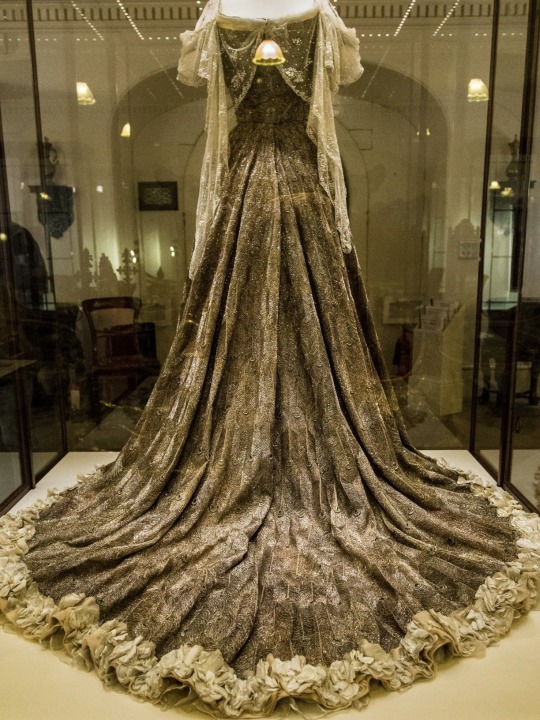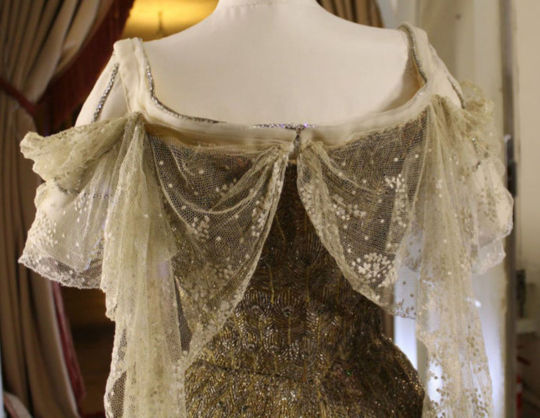#colonial india
Text
Genuine question for all the Britishers out there, do y'all learn about the colonization of India (and other countries) in your School syllabus??
Like do y'all know about the importance of the Indigo plantations, Jallianwala Bagh or the freedom fighters or anything?
[SORRY FOR THE SPELLING ERRORS]
#reblog cause im curious for the results#this is obvi no hate#just interested#british india#colonial india#india#ren polls#british raj#india history#history#hindustan#british colonialism#colonialism#british empire
9 notes
·
View notes
Text
The people who are coming to Auroville are often coming from the places that were settler colonies. A lot of Australians, people from North America. Even if they weren’t colonial citizens. The Mother is, on the face of it, anti-colonial. But she practised these settler colonial activities, under the guise of spiritual enlightenment.
And this is nothing new. This is the story of the French Republic, particularly If you look at histories of Haiti, for example. I haven’t looked at spiritual settlements in other parts of India, but I’m sure there are similarities there, where you have wandering Westerners who have been completely immersed in these orientalist fantasies of the spiritual lives in India.
Spiritual utopianism and settler utopianism, the terms are meant to ask people to think about how someone who has a utopian vision is dispossessing and displacing indigenous people at the same time. To this very day Auroville’s promotional material are full of words like “frontier” and “pioneer”, all of these things that come straight from the United States experience of settlement. And it’s glorified, as if you’re doing it for the greater good.
— Jessica Namakkal on what Auroville tells us about the ‘end of colonialism and empire’
#colonial pondicherry#pondicherry#auroville#french colonialism#colonial tamil nadu#colonial india#neocolonial tamil nadu#neocolonial india#jessica namakkal
7 notes
·
View notes
Note
My empathy is wack so I think I can handle it probably. Obviously I'll feel bad about what happened but I think I can handle most topics.
okay so. tw for massacres and artificial famine. answer will be under the cut
okay so. first of all there's a Wikipedia page about list of massacres in India. you can go to the colonial India section and look.
in particular, i want to draw your attention to the Jallianwala Bagh massacre. I'll copy paste the introduction from Wikipedia here.
"The Jallianwala Bagh massacre, also known as the Amritsar massacre, took place on 13 April 1919. A large, peaceful crowd had gathered at the Jallianwala Bagh in Amritsar, Punjab, British India, to protest the Rowlatt Act and arrest of pro-independence activists Saifuddin Kitchlew and Satyapal. In response to the public gathering, the temporary brigadier general R. E. H. Dyer, surrounded the protesters with his Gurkha, Baloch, Rajput and Sikh troops from 2-9th Gurkhas, the 54th Sikhs and the 59th Scinde Rifles of the British Indian Army.[4] The Jallianwala Bagh could only be exited on one side, as its other three sides were enclosed by buildings. After blocking the exit with his troops, he ordered them to shoot at the crowd, continuing to fire even as the protestors tried to flee. The troops kept on firing until their ammunition was exhausted.[5] Estimates of those killed vary from 379 to 1,500 or more people[1] and over 1,200 other people were injured of whom 192 were seriously injured.[6][7]"
this was like the turning point for Indian Independence movement. the sheer cruelty of the British soldiers at a peaceful gathering shocked the colonial world at that time. the perpetrator, General Dyer, was dismissed from service after this. no other punishment. none. in fact, wait!

this is what he got for massacring over a thousand unarmed people. yeah.
And this is just one incident. one incident of colonial British cruelty upon Indians because we were inferior to them.
oh, I haven't talked of the Bengal famine right?
quoting this article here:
"Policy lapses such as prioritising distribution of vital supplies to the military, civil services and others as well as stopping rice imports and not declaring Bengal famine hit were among the factors that led to the magnitude of the tragedy, historians have maintained."
again, towards the end,
"According to experts, following the Japanese occupation of Burma in 1942, rice imports stopped, and Bengal's market supplies and transport systems were disrupted. The British government also prioritised distribution of vital supplies to the military, civil servants and other "priority classes".
The policy failures began with the provincial government's denial that a famine existed. Humanitarian aid was ineffective through the worst months of the food crisis, and the government never formally declared a state of famine.
It first attempted to influence the price of rice, but these measures created a black market and encouraged sellers to withhold stocks."
so they literally caused a famine in Bengal. my home area. which caused the death of about 1-4 million people. i kid you not
And this does not even scratch the surface of what went on in colonial India
This is. not even 1% of what the British did to colonial India
they never teach you these things because they don't want you people to know the atrocities they'd committed in the past. they just want to paint the picture of a proud nation. no hate to you btw im just a bit mad that they do not teach y'all whatever wrong things they did to other countries. sigh
21 notes
·
View notes
Text

RRR (2022)
A fictitious story about two legendary revolutionaries and their journey away from home before they started fighting for their country in the 1920s.
If you are after entertainment, super hero style story, action scenes and beautifully shot film then definitely give this one a go. You will have to suspend belief (like we normally do for super hero movies) and look at it as that, a movie like Marvel...and out of this world kind of strength and a mission. It's very entertaining. I really enjoyed it and particularly was impressed by the beautiful set design. Definitely worth watching.
If you are looking for a "historic" film then this film isn't for you but if you like action films with gravity defying stunts, it's a fun ride and at the end of the film, you will most likely have a smile on your face.
youtube
#rrr movie#rrr oscars#rrr imdb rating#Indian movies#telugu#Raj#Colonial india#super heros#marvel#Netflix india#Netflix movies#bromance#bollywood#action films#300#1920s#n. t. rama rao jr.#ram charan teja#ram charan rrr#alluri seetharama raju#komaram bheem#alia bhatt#Olivia morris#ray stevenson#independence india#Youtube
2 notes
·
View notes
Text
Beyond the frame: the hidden tale of Kirkpatrick's Mughal Portrait
My article about Kirkpatrick, an 18th-century British officer who famously fell in love and married an Indian Muslim woman, is out in the inkling website.
Please do check it out if the speculations about the socio-cultural ecosystem of colonial India interests you.
https://blog.indialostandfound.com/2024/09/20/beyond-the-frame-the-hidden-tale-of-kirkpatricks-mughal-portrait/
0 notes
Video
youtube
CATCH A BUTCHER
If you like atmospheric, goth type of horror, than this is for you. Anchoring the story in historical events, this film explores a dark, little little known part of British rule over India. The production design, set dressing, and costume work really lift this production to the next level, almost establishing the piece as a prologue to a much larger project.
#catch a butcher#short#short film#horror#horror short#kutcha butcha#colonial india#dark history#british imperialism#india horror#genre#fright#terror#ghost#junkyard demento
1 note
·
View note
Text

#free palestine#palestine#israel#news#colonialism#anti colonialism#democrats#republicans#politics#woc#poc#india
469 notes
·
View notes
Text
We desperately need to reconsider our West versus non-West understanding of the geography of colonialisms. The years 1947 and 1948 mark the creation of the nation-states of India and Israel. These years scar Kashmiris and Palestinians.
Palestinians have been dispossessed of territory and many forced into exile. Kashmir was handed over from an unpopular ruler without the legitimacy of popular vote to the Indian state on October 26, 1947.
A condition of that accession is the United Nations resolution of 1948 for referendum or plebiscite, never facilitated by the Indian state. Israel and India thus inaugurate the colonial occupations of Palestine and Kashmir.
746 notes
·
View notes
Text




"after all, how can one feel the loss of a thing whose existence one has become unconscious to?"
a wonderful collection of essential and constant truth bombs.
#india that is bharat#j. sai deepak#indian literature#indian history#non fiction#decolonisation#indigineous people#indigenous faith#coloniality and nature#indian academia#booklr#studyblr#notes#long reads#coffee#dark academia#light academia#desiblr#study blog#book photography#vsco
1K notes
·
View notes
Text
"Masterpiece of Indian craftsmanship!"
The Peacock dress of Lady Curzon is a gown made of gold and silver thread embroidered by the Workshop of Kishan Chand (India)


The Peacock Dress of Lady Curzon is a iconic masterpiece of Indian craftsmanship and design. Created by Indian artisans and designers, this exquisite gown was worn by Lady Curzon, the wife of the Viceroy of India, to the Delhi Durbar in 1903. The dress is a stunning example of Indian craftsmanship, adorned with intricate peacock motifs, precious stones, and metallic threads, showcasing the excellence of Indian design and artistry.

"Peacock Dress of Lady Curzon: A resplendent masterpiece of Indian design and craftsmanship, this gown is a testament to the country's rich textile heritage. Intricate peacock motifs, crafted with precision and flair, adorn the dress, showcasing the exceptional skill of Indian artisans. A true masterpiece of Indian fashion and design."
Incredible craftsmanship of Indian designer:
"The Peacock Dress is a shining example of Indian designers' exceptional skill and creativity. Every thread, every stone, and every motif is a testament to their mastery of the craft. This dress is not just a piece of clothing, but a work of art that has stood the test of time, showcasing the brilliance of Indian design to the world."
EMBROIDERY DETAILS


"Peacock Dress of Lady Curzon: A resplendent masterpiece of Indian design and craftsmanship, this gown is a testament to the country's rich textile heritage. Intricate peacock motifs, crafted with precision and flair, adorn the dress, showcasing the exceptional skill of Indian artisans. The embroidery work is a marvel, with delicate silk threads, precious stones, and metallic wires used to create intricate patterns, including:
- Intricate peacock feather designs, with delicate eye and wing details
- Floral motifs, with intricate stem and leaf work
- Geometric patterns, with precision-cut mirrors and beads


The embroidery is a masterclass in Indian craftsmanship, with techniques like zardozi, zari, and chikan work used to create a truly regal and awe-inspiring piece. Every thread, every stone, and every motif is a testament to the mastery of Indian designers and artisans."
#desiblr#desi tumblr#desi tag#desi aesthetic#desi#desi academia#indians#India#vintage#fashion#british rule#colonialism#indian artist#indian art#indian aesthetic#outfit#craftsmanship#fashion designer#incredible india#being desi#lady Curzon#embroidery#indian history
107 notes
·
View notes
Text
Obviously, I won't wish cancer on my worst enemy, but I also can't give a single flying fuck about Charles or Kate or anyone from the British Royal Family as long as they continue to benefit from the wealth they plundered from my country for 200 long years, and their lifestyles and expensive treatments are paid with the blood and impoverishment of my ancestors and countrymen.
#kate middleton#original post#not incorrect quotes#british royal family#duchess of cambridge#prince william#india#desi tumblr#desi tag#desiblr#desi#british colonialism#british monarchy#uk politics
195 notes
·
View notes
Text
“After 1947, you had even [“Mahatma” Mohandas] Gandhi saying to these people [in Pondicherry], “Hold on, don’t do anything, just respect the French right now.” And you have France on the other side saying the same thing. You have these people who aren’t really being listened to by either state. And the British found this place to be a horrible backwater, that was just a headache to them.
The people of Pondicherry are not stateless. They are within state territories. But they basically have no agency. None of the people in power is listening to them. So what does it mean to look at this minor space that has been dismissed, even when you have this intense division of territory that truly affects people’s lives?”
— Jessica Namakkal on what Auroville tells us about the ‘end of colonialism and empire’
#pondicherry#colonial tamil nadu#colonial india#french colonialism#jessica namakkal#gandhi#colonial pondicherry
1 note
·
View note
Photo

European Settlements in India (1498 - 1739)
87 notes
·
View notes
Text
someone wore this to the cricket world cup final in india. the channels broadcasting turned away the cameras and played ads.
he walked in front of millions AND the prime minister of India.




through this person's incredible bravery, Indians who stand with Palestine, Indians who have to spend their days under a fascist regime, have a representation that does them justice.
our voices of dissent have been crushed through harrowing persecution.
in 1981, India issued a postage stamp with the Indian and Palestinian flags flying side by side, and the words "Solidarity with the Palestinian people." India was the first non-arab country to recognize the state of Palestine.

the country i have lived in for 18 years is a dignified member of the post-colonial world. its citizens have moral backbones. they are often murdered or imprisoned for having it.
#i am so ecstatic that this person is not an indian citizen because otherwise...#everybody else in my country suffers due to these fascist maniacs who seek to represent us#and if i get any freaks interacting with this : i am not muslim#i am a bengali hindu and despite the vitriol hindutva maniacs spew online we have had some of the largest protests here in india#hopefully one day we too will be safe in our own country#palestine#free palestine#gaza genocide#gaza#gaza strip#gaza under attack#genocide#decolonisation#settler colonialism#imperialism#india#indiavsaustralia#india vs australia#australia#cricket world cup 2023
295 notes
·
View notes
Text
Endangered Indian sandalwood. British war to control the forests. Tallying every single tree in the kingdom. European companies claim the ecosystem. Spices and fragrances. Failure of the plantation. Until the twentieth century, the Empire couldn't figure out how to cultivate sandalwood because they didn't understand that the plant is actually a partial root parasite. French perfumes and the creation of "the Sandalwood City".
---
Selling at about $147,000 per metric ton, the aromatic heartwood of Indian sandalwood (S. album) is arguably [among] the most expensive wood in the world. Globally, 90 per cent of the world’s S. album comes from India [...]. And within India, around 70 per cent of S. album comes from the state of Karnataka [...] [and] the erstwhile Kingdom of Mysore. [...] [T]he species came to the brink of extinction. [...] [O]verexploitation led to the sandal tree's critical endangerment in 1974. [...]
---
Francis Buchanan’s 1807 A Journey from Madras through the Countries of Mysore, Canara and Malabar is one of the few European sources to offer insight into pre-colonial forest utilisation in the region. [...] Buchanan records [...] [the] tradition of only harvesting sandalwood once every dozen years may have been an effective local pre-colonial conservation measure. [...] Starting in 1786, Tipu Sultan [ruler of Mysore] stopped trading pepper, sandalwood and cardamom with the British. As a result, trade prospects for the company [East India Company] were looking so bleak that by November 1788, Lord Cornwallis suggested abandoning Tellicherry on the Malabar Coast and reducing Bombay’s status from a presidency to a factory. [...] One way to understand these wars is [...] [that] [t]hey were about economic conquest as much as any other kind of expansion, and sandalwood was one of Mysore’s most prized commodities. In 1799, at the Battle of Srirangapatna, Tipu Sultan was defeated. The kingdom of Mysore became a princely state within British India [...]. [T]he East India Company also immediately started paying the [new rulers] for the right to trade sandalwood.
British control over South Asia’s natural resources was reaching its peak and a sophisticated new imperial forest administration was being developed that sought to solidify state control of the sandalwood trade. In 1864, the extraction and disposal of sandalwood came under the jurisdiction of the Forest Department. [...] Colonial anxiety to maximise profits from sandalwood meant that a government agency was established specifically to oversee the sandalwood trade [...] and so began the government sandalwood depot or koti system. [...]
From the 1860s the [British] government briefly experimented with a survey tallying every sandal tree standing in Mysore [...].
Instead, an intricate system of classification was developed in an effort to maximise profits. By 1898, an 18-tiered sandalwood classification system was instituted, up from a 10-tier system a decade earlier; it seems this led to much confusion and was eventually reduced back to 12 tiers [...].
---
Meanwhile, private European companies also made significant inroads into Mysore territory at this time. By convincing the government to classify forests as ‘wastelands’, and arguing that Europeans would improves these tracts from their ‘semi-savage state’, starting in the 1860s vast areas were taken from local inhabitants and converted into private plantations for the ‘production of cardamom, pepper, coffee and sandalwood’.
---
Yet attempts to cultivate sandalwood on both forest department and privately owned plantations proved to be a dismal failure. There were [...] major problems facing sandalwood supply in the period before the twentieth century besides overexploitation and European monopoly. [...] Before the first quarter of the twentieth century European foresters simply could not figure out how to grow sandalwood trees effectively.
The main reason for this is that sandal is what is now known as a semi-parasite or root parasite; besides a main taproot that absorbs nutrients from the earth, the sandal tree grows parasitical roots (or haustoria) that derive sustenance from neighbouring brush and trees. [...] Dietrich Brandis, the man often regaled as the father of Indian forestry, reported being unaware of the [sole significant English-language scientific paper on sandalwood root parasitism] when he worked at Kew Gardens in London on South Asian ‘forest flora’ in 1872–73. Thus it was not until 1902 that the issue started to receive attention in the scientific community, when C.A. Barber, a government botanist in Madras [...] himself pointed out, 'no one seems to be at all sure whether the sandalwood is or is not a true parasite'.
Well into the early decades of twentieth century, silviculture of sandal proved a complete failure. The problem was the typical monoculture approach of tree farming in which all other species were removed and so the tree could not survive. [...]
The long wait time until maturity of the tree must also be considered. Only sandal heartwood and roots develop fragrance, and trees only begin developing fragrance in significant quantities after about thirty years. Not only did traders, who were typically just sailing through, not have the botanical know-how to replant the tree, but they almost certainly would not be there to see a return on their investments if they did. [...]
---
The main problem facing the sustainable harvest and continued survival of sandalwood in India [...] came from the advent of the sandalwood oil industry at the beginning of the twentieth century. During World War I, vast amounts of sandal were stockpiled in Mysore because perfumeries in France had stopped production and it had become illegal to export to German perfumeries. In 1915, a Government Sandalwood Oil Factory was built in Mysore. In 1917, it began distilling. [...] [S]andalwood production now ramped up immensely. It was at this time that Mysore came to be known as ‘the Sandalwood City’.
---
Text above by: Ezra Rashkow. "Perfumed the axe that laid it low: The endangerment of sandalwood in southern India." Indian Economic and Social History Review 51, no. 1, pages 41-70. March 2014. [Bold emphasis and some paragraph breaks/contractions added by me. Italicized first paragraph/heading in this post added by me. Presented here for commentary, teaching, criticism purposes.]
#a lot more in full article specifically about#postindependence indian nationstates industrial extraction continues trend established by british imperial forestry management#and ALSO good stuff looking at infamous local extinctions of other endemic species of sandalwood in south pacific#that compares and contrasts why sandalwood survived in india while going extinct in south pacific almost immediately after european conques#abolition#ecology#imperial#colonial#landscape#indigenous#multispecies#tiger#tidalectics#archipelagic thinking#intimacies of four continents#carceral geography#geographic imaginaries#haunted
220 notes
·
View notes
Text

293 notes
·
View notes